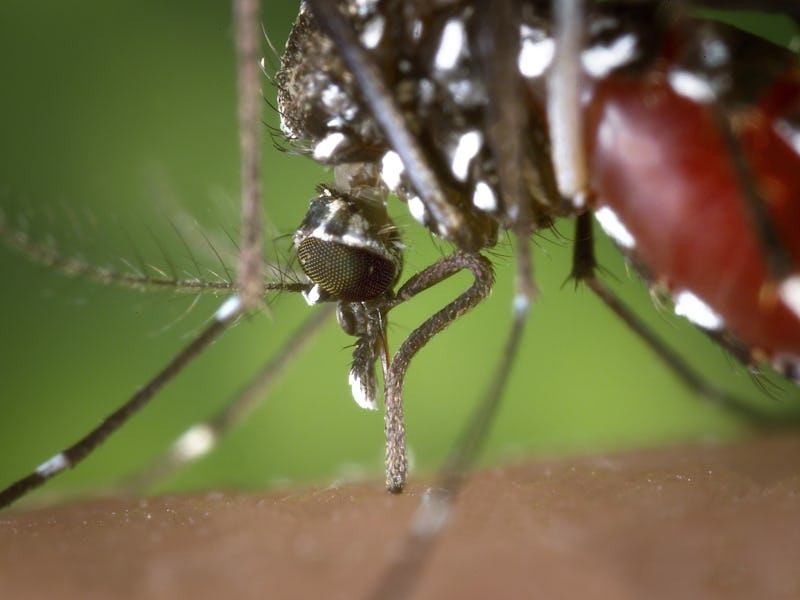With Zika Virus Headed North, American Scientists Side-Eye Asian Tiger Mosquitoes
As temperatures warm up, we're scrambling to determine whether another species could carry Zika further north than expected.

The first wave of seasonal warmth is spreading across the U.S., melting away the frozen borders that have kept Zika virus at bay. Spring is coming. And that’s big news for epidemiologists and entomologists, who are worried about what heat could mean for mosquito migration.
Since the virus first popped up in Central America, Americans have been concerned but casual observers, watching from the safe side of a cold front that was keeping virus-transmitting Aedes aegypti mosquitoes from crossing into the southern states. While the rise in temperature will allow them to head north into southern Texas, Florida, and California, there’s still a distinct northern limit these mosquitos naturally won’t cross at the bottom of North Carolina and in the middle of New Mexico, says infectious disease expert Isaac Bogoch, Ph.D.. However, the Asian Tiger Mosquito is known to travel as far north as New York, and it could transmit Zika. Scientists don’t know if it will.
“One of the big questions is, how efficient are other Aedes mosquitoes at transmitting this infection?” Bogoch tells Inverse. He’s referring, specifically, to Aedes albopictus, the official name for the Asian Tigers. This species covers a much larger geographic area than Aedes aegypti in the U.S..
Asian Tiger Mosquitos cover much more of the U.S. than Aedes aegypti.
Modeling viral spread through mosquitoes is difficult. Even with Aedes aegypti, not every bite leads to infection, and not every infection leads to symptoms. “If it is efficient, it puts a lot more people in a susceptible area,” Bogoch says. He refers to a study, published in PLOS Neglected Tropical Diseases in 2014, that examined the spread of Zika through the species during an outbreak in Gabon, calling it a potential “new emerging threat.” The scary thing is that its known geographic range is expanding. Scarier still is that we don’t know much beyond that. Berry College biologist David Bruce Conn, Ph.D., has pointed out that while there’s little doubt that the Asian Tigers can play a big role in outbreaks, it isn’t clear whether it can do so in more temperate climates than Africa.
Should we be concerned? Bogoch isn’t too worried, calling himself “cautiously optimistic.” Whether we’re stuck dealing with one or two Aedes species, he’s got faith that conditions in America will make it harder for Zika-carrying mosquitoes to take root. We’ve got more resources for mosquito control efforts and better public health surveillance, he explains, and most people live their day-to-day lives in a way that decreases the chances of getting bitten. “In Florida, where do people spend their days? In air-conditioned places. They’re indoors,” he says. By virtue of the way Americans live, the risk is already greatly decreased.
“It’s still in the U.S., but the conditions are much different,” he says. “It just means that the region on the map of potential areas for infection transmission is greater and so is the potential number of people at risk for Aides albopictus.”
Besides, if it wasn’t for the microcephaly link, Zika infections “would be much much less of an issue,” he points out. “The number of people who actually get ill is actually really low.”
The way it stands, Zika is enough of an issue for President Obama to have asked Congress for $1.8 billion in emergency funding. The window for scientists to discover the Asian Tiger’s Zika-transmitting efficiency is rapidly closing — the disease will arrive, via Aedes aegypti, by April or May — which is why the White House and the CDC have called an emergency Zika Action Summit to draft a contingency plan for dealing with Zika stateside.